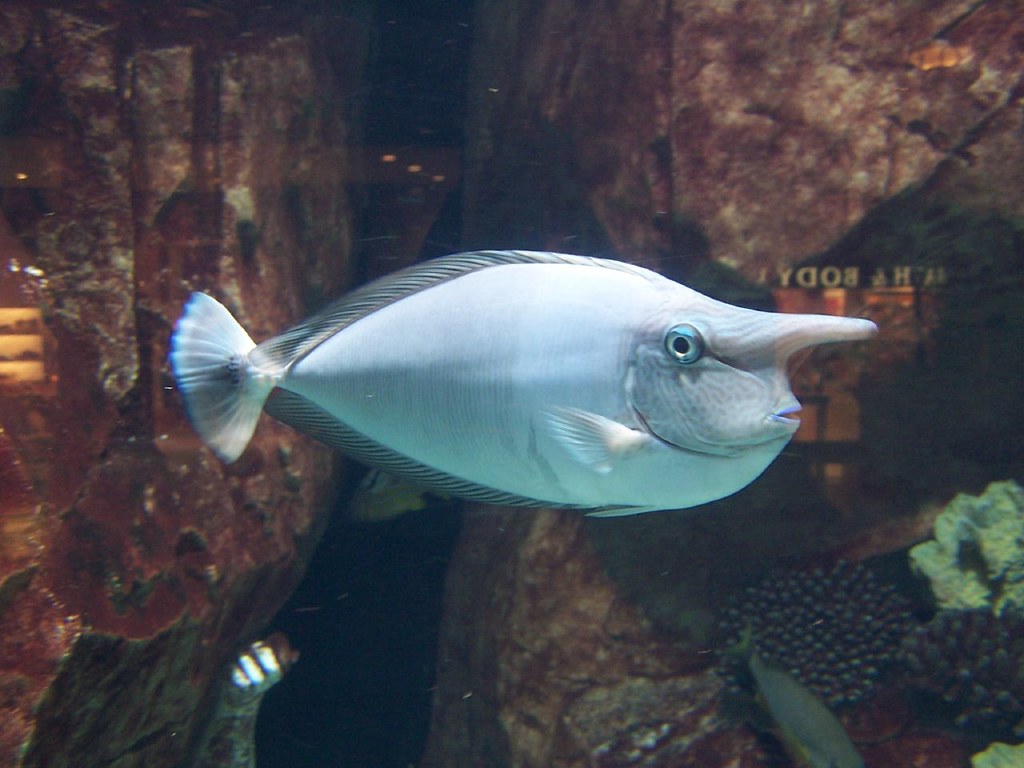15 Interesting Facts About Unicorn Fish
What is a Unicorn Fish?
Unicorn fish, also known as Naso fish, are a genus of fish belonging to the Acanthuridae family, which also includes surgeonfish and tangs. They are named for the distinctive horn or head-spine protruding from their foreheads, reminiscent of the mythical unicorn. However, not all unicorn fish species have a pronounced horn, with some only having a small bump and others having no protrusion at all.
Unicorn fish inhabit coral reefs across the Indo-Pacific region and are active during the day, roaming in groups while grazing on algae. With their laterally flattened bodies and large, powerful dorsal and anal fins, they are fast, agile swimmers able to swiftly change direction.
They use the sharp defensive spines located near their tails to deter predators and competitors. Unicorn fish play an important ecological role, controlling algae growth on reefs and contributing to the health of these ecosystems.
Their average size ranges from 10-16 inches, but some larger species can reach up to 2 feet in length. While not generally aggressive, they will utilize their sharp spines to defend themselves if threatened. Some species face conservation risks due to factors like overfishing.
Here are 15 interesting facts about these spectacular sea creatures:

Interesting Facts About Unicorn Fish
1. The horn that gives them their name
Unicorn fish have a distinctive horn or head-spine protruding from their forehead. This unique appendage is how they got their mythical moniker. The bony horn is thought to make them less appetizing to predators.
2. Their horn grows with age
A young unicorn fish’s horn starts growing when it reaches about 5 inches in length. The horn continues to elongate as the fish matures. Older individuals have longer forehead horns than juvenile unicorn fish.
3. They can change color
Unicorn fish possess specialized cells called chromatophores that allow them to alter their pigmentation. They often change colors to camouflage themselves, send signals during courtship, or convey aggression towards competitors.
4. Some species grow quite large
While the average adult unicorn fish measures 10-16 inches, some varieties can reach up to 2 feet in length. The magnificent Naso unicornis is one of the larger species, sometimes exceeding 3 feet long.
5. Unicorn fish are fast swimmers
With their large, powerful dorsal and anal fins, unicorn fish are incredibly agile swimmers. They can swiftly change direction and speed to catch food or evade predators.
6. They have excellent vision
Unicorn fish have highly developed eyes, giving them excellent vision. Their specialized optics help them spot food and threats in the complex coral reef environment.
7. Unicorn fish often form social groups
While some unicorn fish lead solitary lives, many species form social groups called schools. Schooling provides protection from predators and opportunities for mating.
8. Their diet consists mainly of algae
Unicorn fish are primarily herbivores, feeding mainly on algae and seaweed. Their beak-like jaws and specialized teeth allow them to scrape algae off coral reefs. This grazing helps keep reefs healthy.
9. Some species eat coral
While all unicorn fish consume algae, some also feed on live coral polyps. This can damage reefs. However, most species remove only dead coral during feeding.
10. Unicorn fish sleep in reef crevices
At night, unicorn fish take shelter in holes and crevices throughout the reef. Sleeping in reef crevices protects them from nocturnal predators.
11. Several species face conservation threats
Due to overfishing, habitat loss, and climate change, the bumphead unicorn fish and a few other species are vulnerable or near threatened. Protecting coral reefs is vital to conserving these species.
12. Unicorn fish play key ecological roles
Through grazing algae, unicorn fish prevent reefs from becoming overgrown. This makes space for new coral to grow. By pruning back algae, they help maintain balanced, healthy coral ecosystems.
13. Some cultures consider them a prize catch
Valued for food and aquariums, unicorn fish are highly sought after in many regions. Their meat is considered a delicacy and commercial fisheries target them.
14. Unicorn fish spawn in groups
When spawning, unicorn fish gather in large assemblies, sometimes containing over 100 individuals. Males and females jointly release eggs and sperm into the water column to fertilize.
15. Unicorn fish inspire mythology
Revered for their unique beauty, unicorn fish have inspired fantastical myths and legends across many human cultures. Even their scientific name, Naso, means “nose” in Latin, referring to their distinctive facial horn.
Conclusion
With their vibrant colors, signature horns, important ecological roles, and mythological allure, unicorn fish are truly wondrous creatures. These fascinating fish never cease to delight divers and marine biologists alike. Protecting the threatened coral reef ecosystems unicorn fish depend on is key to ensuring their continued survival.






